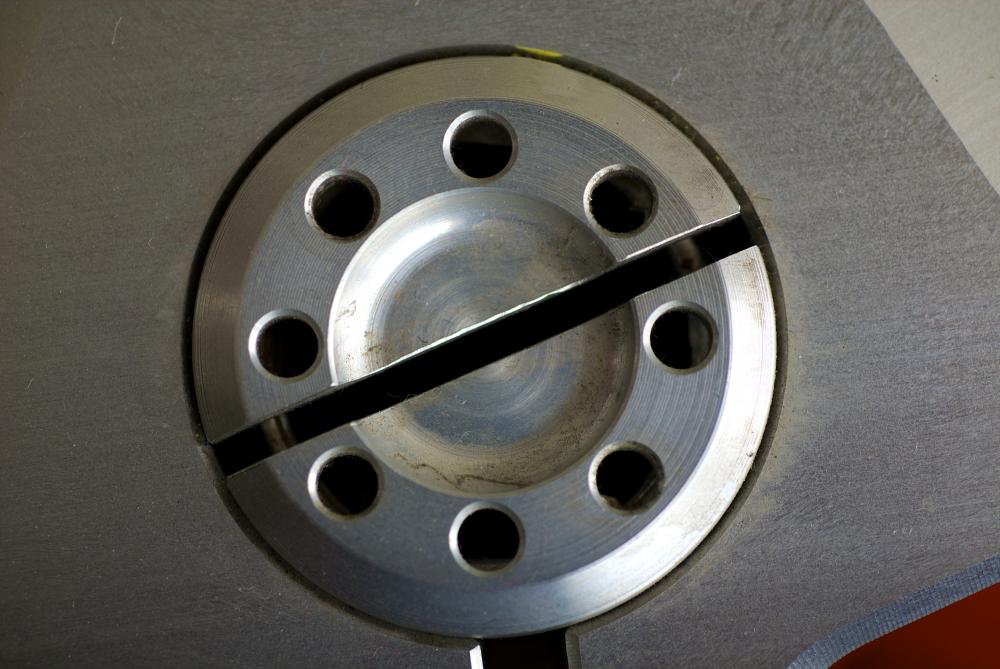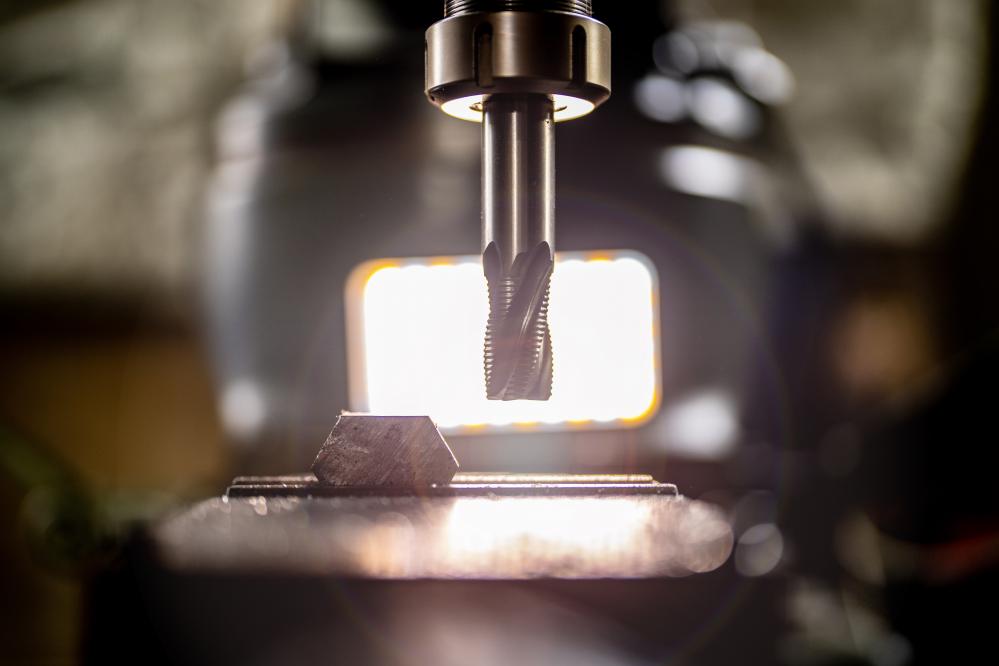3 Axis Machining

Understanding 3 Axis Machining
At Cal West Manufacturing, we've seen the transformative power of 3 Axis Machining first-hand. This technology, pivotal in the manufacturing and engineering sectors, revolves around the simultaneous movement of a cutting tool or workpiece along three axes: the X, Y, and Z. This coordinated movement allows for the intricate shaping and detailing of materials, an essential capability in our pursuit of precision and innovation.
Importantly, 3 Axis Machining affords us the versatility to work on a plethora of projects, extending from automotive components to intricate aerospace parts. Our commitment to quality and precision in crafting these items is directly supported by this technology. Its application ensures we meet the nuanced demands of our diverse client base, reinforcing our role as a leader in the custom design and fabrication fields.
Benefits and Challenges
Advantages of 3 Axis Machining
The prowess of 3 Axis Machining lies in its ability to produce finely detailed and complex shapes with high precision. The efficiency and speed at which our CNC machines operate under this configuration significantly enhance our productivity. Furthermore, the automation of these machines minimizes human error, elevating the consistency and quality of our production line.
Limitations of 3 Axis Machining
Despite its numerous advantages, 3 Axis Machining is not without its limitations. Complex geometries that require maneuvers beyond the capabilities of the three axes demand alternative approaches, such as 5 Axis Machining. Additionally, the setup time for intricate projects can extend production schedules, a factor we continuously strive to optimize through advanced planning and programming techniques.
Applications in Industry
3 Axis Machining has a broad array of applications across various sectors. In the automotive industry, it enables us to fabricate complex engine components with rigorous precision. Within the aerospace realm, it's instrumental in creating the high-strength, lightweight parts essential for flight. Our capabilities extend to the medical field as well, where we produce custom implants and surgical tools tailored to the specific needs of patients and practitioners alike.
The versatility of 3 Axis Machining also shines in the creation of custom fabrications for the movie and construction industries. From detailed prop designs to robust building components, our technology and expertise make visions tangible. At Cal West Manufacturing, we embrace the challenges presented by diverse projects, viewing them as opportunities to demonstrate the breadth of our skills and the depth of our commitment to innovation.
Optimizing Manufacturing Efficiency
To leverage the full potential of 3 Axis Machining, we constantly refine our operations and methodologies. From selecting the optimal materials and tools to rigorously training our staff, every aspect of our workflow is designed to maximize efficiency and quality. Our engineers and machinists collaborate closely, blending technical knowledge with creative problem-solving skills to push the boundaries of what's possible.
The integration of advanced software and meticulous planning further enhances our productivity. By simulating machining processes before actual production, we can anticipate and mitigate potential challenges, ensuring a smooth transition from design to finished product.
Personal Reflections on 3 Axis Machining
Having worked at Cal West Manufacturing for years, I've witnessed the transformational impact of 3 Axis Machining firsthand. I remember working on a particularly challenging project, where the client required a unique, complex component for a prototype. The specifications were demanding, pushing the limits of our capabilities. Through the application of 3 Axis Machining, not only were we able to meet these demands, but we also exceeded expectations, delivering a product of exceptional quality and precision.
This experience is a testament to the potential of 3 Axis Machining. It embodies the essence of our work at Cal West Manufacturing: a dedication to overcoming challenges through innovation, precision, and hard work. Each project is a journey, from conceptualization to creation, with 3 Axis Machining as our trusted guide.
Future Perspectives
Looking ahead, the future of 3 Axis Machining is bright. As technology continues to evolve, so too will the capabilities and applications of this machining process. At Cal West Manufacturing, we're committed to staying at the forefront of these advancements, continuously exploring new ways to enhance our services and products.
The potential for innovation is limitless. With each advancement in 3 Axis Machining technology, we unlock new possibilities for design and manufacturing. By embracing these changes and challenges, we not only improve our own operations but also contribute to the broader field of manufacturing and engineering, paving the way for future innovations.

What is a 3 axis machine?
At Cal West Manufacturing, when we talk about a 3 axis machine, we're referring to a type of CNC (Computer Numerical Control) equipment that operates on three axes: X, Y, and Z. The beauty of this setup lies in its simplicity yet profound capability to transform raw materials into intricate parts with precision. Imagine it as a coordinated dance, where the tool moves left to right (X-axis), front to back (Y-axis), and up and down (Z-axis), enabling us to sculpt with remarkable accuracy. It's like having an extremely skilled artisan who can replicate intricate designs flawlessly, but at a much faster pace and without tiring. The personal satisfaction we get from seeing a block of metal transformed into a functional and beautiful piece, knowing every movement was meticulously planned and executed, is indescribable.
How much does a 3 axis CNC machine cost?
The cost of a 3 axis CNC machine can vary significantly based on factors such as size, complexity, and specific features required. At Cal West Manufacturing, we've seen prices range from $10,000 for basic models suitable for smaller projects, to over $500,000 for large, industrial-grade machines equipped with advanced features. It's a lot like buying a car - you have the base models that will get the job done, and then you have the 'luxury' models with all the bells and whistles that elevate the production capability to a whole new level. However, the value these machines bring to manufacturing - in terms of precision, efficiency, and capability - can far outweigh the initial investment. Think of it as investing in a highly skilled team member who will consistently produce high-quality work, day in and day out, for years to come.
What is the difference between 3 axis and 4 axis machining?
The main difference between 3 axis and 4 axis machining lies in the addition of a rotary axis. While a 3 axis machine operates on the X, Y, and Z axes, a 4 axis machine introduces an additional rotary movement, often around the X-axis, called the A-axis. This doesn't just add complexity; it significantly increases the machine's capability to produce more complex geometries without repositioning. Imagine being able to carve a sculpture not just from the front, but in the round, by rotating it. That's the advantage of a 4 axis machine. It opens up new dimensions for creativity and precision, allowing us to tackle projects that would be cumbersome or even impossible on a 3 axis machine. The ability to work on multiple sides of a part in a single setup not only saves time but also ensures a higher level of consistency and accuracy in the finished product.
What are the 5 axis of machining?
Expanding beyond the capabilities of 3 and 4 axis machines, the 5 axis of machining introduces two additional rotary axes, often referred to as the A and B axes, which complement the traditional X, Y, and Z. This allows for the cutting tool or the workpiece to be positioned and rotated in almost any direction, making it possible to machine the most complex shapes with high precision. Imagine a globe that can tilt and rotate to any position while a pen draws detailed maps across its surface without ever lifting off. That's similar to how a 5 axis machine can maneuver around a part, accessing areas that were unreachable with 3 or 4 axis setups. For us at Cal West Manufacturing, this technology represents the pinnacle of machining flexibility, enabling us to push the boundaries of what can be crafted and meet our clients' most challenging demands with unparalleled precision.
Advantages of 3 Axis Machining
One of the most significant advantages of 3 Axis Machining lies in its ability to produce complex shapes and detailed parts with high precision. It's an ideal choice for a wide range of projects, providing a balance of accuracy, efficiency, and cost-effectiveness. For businesses like ours at Cal West Manufacturing, it means we can offer competitive pricing for high-quality work, making it accessible for diverse industries. Additionally, the relative simplicity of 3 Axis Machining allows for shorter setup times and easier programming, translating to faster turnaround times for our clients. It's particularly rewarding when we can take a client's concept and turn it into a tangible product quickly and efficiently, without sacrificing quality.
Challenges in 3 Axis Machining
Despite its many advantages, 3 Axis Machining does present certain challenges, particularly when it comes to extremely complex geometries or parts that require machining on multiple faces in a single setup. In such cases, the limitations of the three axes can lead to longer production times and increased costs due to the need for multiple setups or manual intervention. At Cal West Manufacturing, we thrive on finding creative solutions to these challenges. Whether it involves innovative fixture design or clever programming strategies, we're constantly seeking ways to push the limits of our 3 Axis Machining capabilities to meet and exceed our clients' expectations.
Additional Resources
- Govinfo - Official website for U.S. government publications.
- NASA - National Aeronautics and Space Administration, providing valuable information on aerospace technology.
- National Center for Biotechnology Information - Resource for medical-related information and research.
- National Institute of Standards and Technology - Offers standards and technology resources for various industries.
- Engineering Toolbox - Provides engineering resources and tools for professionals.
